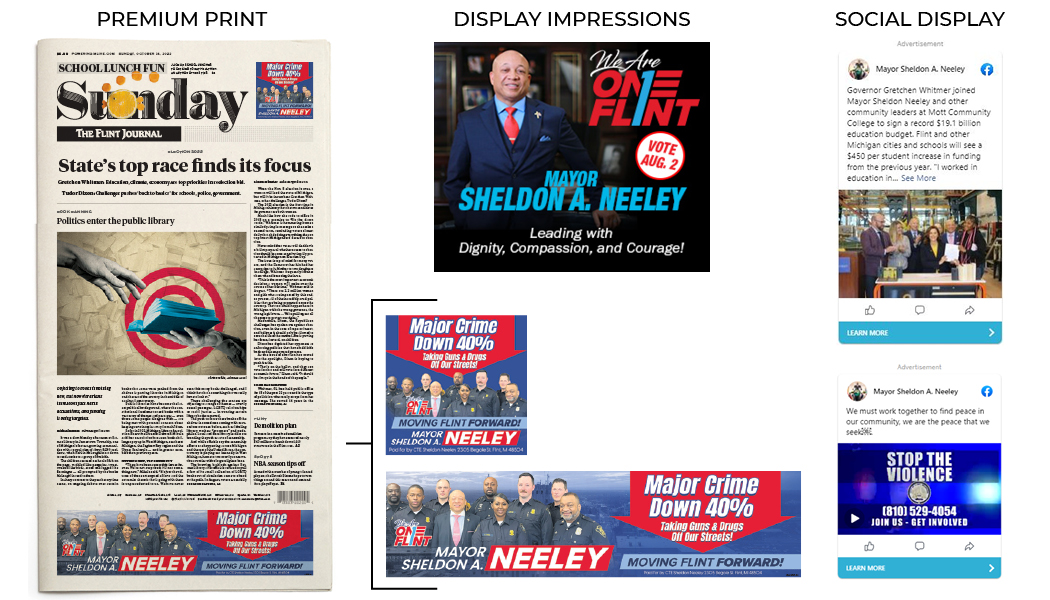Sheldon A. Neeley was elected as Flint, Michigan’s mayor in 2019, and served a truncated three-year term before being re-elected in 2022. A former State representative in Michigan’s 24th House district, he had also served more than two terms in the Michigan House of Representatives.
This case study reports advertising results only and is not intended to endorse any political candidate or party. Advance Local newsrooms and their activities are separate and distinct from our advertising division. Coverage of candidates is performed with integrity by our editorial team. This case study was penned by the marketing department.
In 2019’s mayoral race, Neeley faced mayoral incumbent Karen Weaver. With fewer than 300 votes between them, they both advanced to the mayoral race, with Neeley taking the race at an even slimmer margin. (During this race, his election funds were a remarkable 10% of his opponent’s.) By 2022, the stage was set for a rematch. Our firm was employed by The Committee to elect Sheldon Neeley to provide media services leading into the mayoral race.
They utilized the following tactics:

Social Display

Premium Print Ad Positions (HPTO)

Display Impressions

OTT (Over the Top Streaming Commercial Advertising)
How these tactics performed
Throughout the duration of this mayoral race campaign, our team saw unprecedented engagement with these tactics. While benchmarking for political ads is near impossible in an ever-changing legislative environment, audience targeting, serving of ad materials alongside trusted news content, and effective creative all play a role in ad performance.
Display Impressions, for instance, saw a click through rater of .51%, but overall interactions of nearly 4%. Social display (a tactic where organic facebook posts are served in place of an ad), the CTR for isolated posts topped 1.9%. These results are extremely strong.
But perhaps the most exciting piece of this puzzle is OTT. (For savvy digital advertisers looking for better control and comprehension of their video campaigns, streaming offers the tools and data necessary to speak to their audience meaningfully and at scale. Television ads are losing local audiences while the cost of TV spots remains the same. Political advertisers are reaching less and paying more for ads. TV is expensive, and online video has better-defined audience targeting capabilities at a much smaller price tag. Read more on this solution and its benefits here.)
Between mid-October 2022 and the November election, The Committee to elect Sheldon Neeley used OTT to create a firmer audience understanding of the candidate and his platform. These were consumed at pace, with the majority of the audience watching these advertisements to 100% completion.
WATCHED TO THE 50% MARK
watched to completion
For Candidate and Issues-Based Advertisers
Most of the attention paid to advertising expenditures through election season focuses on direct campaign spend. While the average dollars spent per cycle has dramatically increased over recent elections, most do not realize that issues advertising, PAC advertising, and “friends of” ads account for even larger average spends (often from out-of-state sources).
According to Ad Exchanger, most news media spend increases in recent campaigns were with programmatic, with one source quoting a 40% increase in revenue YoY based on booked revenue through Q4 2022.
This case study reports advertising results only and is not intended to endorse any political candidate or party. Advance Local newsrooms and their activities are separate and distinct from our advertising division. Coverage of candidates is performed with integrity by our editorial team. This case study was penned by the marketing department.



 Ad Choices
Ad Choices
